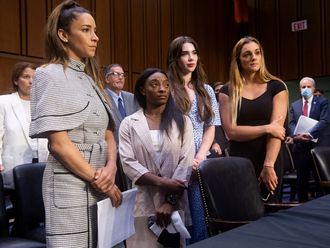Washington: More than any administration in recent history, the Obama White House has focused on a law enforcement mission that might seem antithetical to hard-nosed prosecutors: getting criminal offenders out of jail early and trying to give them the skills to stay out.
With a flurry of prison and sentencing initiatives in recent months, the Justice Department has worked to finish an eight-year initiative that Obama’s attorney general, Loretta Lynch, predicted in an interview would make a “significant difference” in correcting the criminal justice excesses of past generations.
And in his final week in office, Obama is likely to grant commutations to shorten the prison sentences of still more nonviolent drug offenders, officials said. He has already issued more than 1,000 commutations — more than the number issued by the prior 11 presidents combined, according to the White House.
But that legacy is about to come under quick siege with the incoming Trump administration’s “law and order” platform, as Sen. Jeff Sessions, Republican-Alabama, President-elect Donald Trump’s nominee for attorney general, made clear last week at his confirmation hearing. Sessions — a staunch conservative who has been a key roadblock in the Senate to legislation easing what many see as unduly long prison sentences — vowed at his hearing that cracking down on drugs, violence, gun crimes and illegal immigrants would be among his top priorities. Those goals are the same ones he has had for decades as a federal prosecutor in Alabama and a US senator.
“I’m very concerned that the recent jump in violent crime and murder rates are not anomalies, but the beginning of a dangerous trend that could reverse those hard-won gains that have made America a safer and more prosperous place,” he told the Senate Judiciary Committee. That dark view of a nation at risk echoes the stance of Trump, who declared himself the “law-and-order candidate” and warned that crime was “out of control”.
A tougher approach also threatens what the Obama administration regards as a milestone in criminal justice. For the first time in decades, the population of prisoners in local, state and federal prisons — which quadrupled from about 500,000 in 1980 to 2.2 million in 2015 — is actually shrinking.
The Obama administration sees that trend as a reflection of more lenient and sensible approaches to sentencing, and in recent months, Justice Department officials have moved ahead with initiatives meant to provide “second chances” for criminal offenders and ease their path back to their communities.
Public safety
They set up a school system in federal prisons. They put in place new oversight for halfway houses. They created a new, centralised mental health facility for women at the federal prison in Danbury, Connecticut. They stopped using private prisons to house federal offenders because of safety and security concerns.
And they issued a report in conjunction with the Urban Institute concluding that fairer and “more enlightened” prison sentencing policies at the state level — where the bulk of prisoners are held — had succeeded both in bolstering public safety and in cutting many millions in costs for strapped states.
The mentality among prosecutors in the 1990s was to put drug offenders away for as long as possible. But Lynch said the stiff sentencing policies failed to adequately distinguish between the drug kingpin and “the kid on the corner”.
The consequences for both the prisoners and their families have been enormous, she said. “I think it was clearly a mistake, in hindsight,” she said. “In trying to get the balance right, we seriously overshot the mark in the ‘90s.”
Those long sentences, Lynch said, have only been compounded by the lack of adequate prison programs for job training, education and mental health. Too many freed prisoners, she said, “never learned to read in prison, they never learned a trade in prison, they are unemployable, literally unemployable. When they come out, they have nowhere to live, they may come out still with an addiction”.
During the transition process, Justice Department officials have emphasised those same themes to Sessions’ team. While she is well aware of Sessions’ politics on the opposite side of the issue, she said she hoped his team got the message. “We never know,” she said, “what new policies a new administration will want to focus on.”












